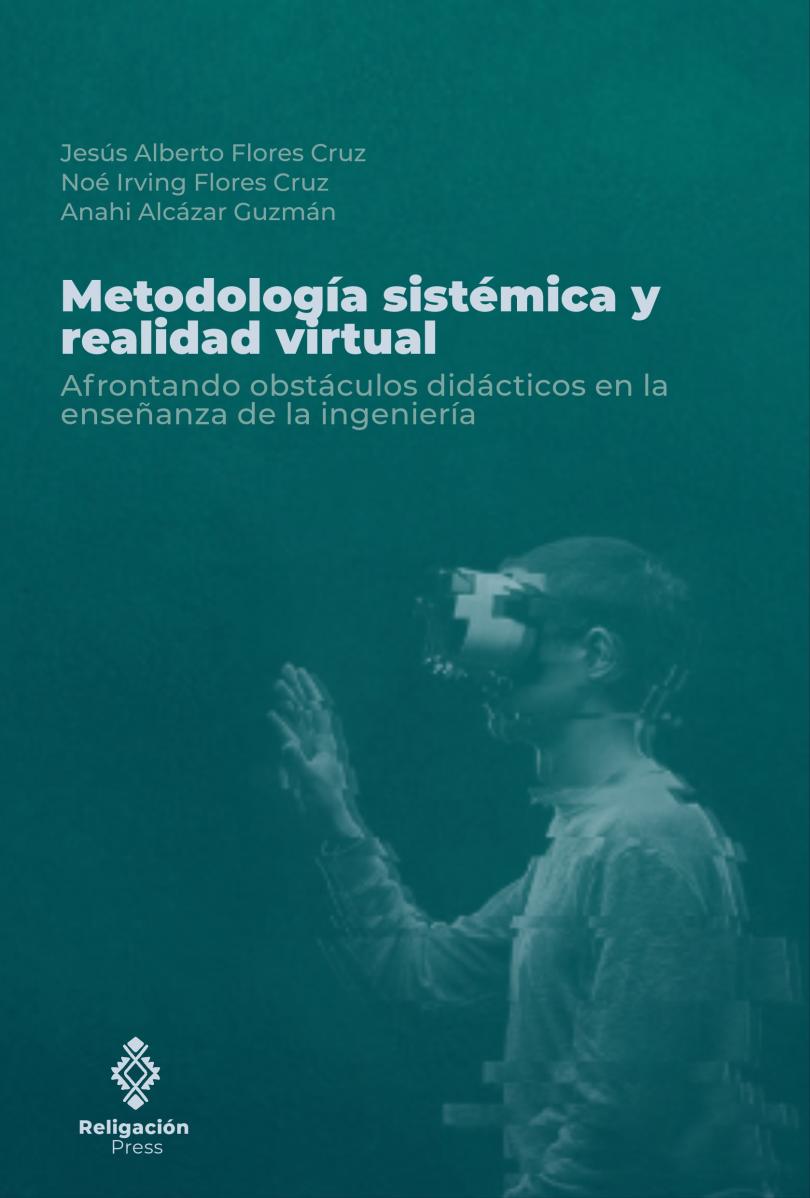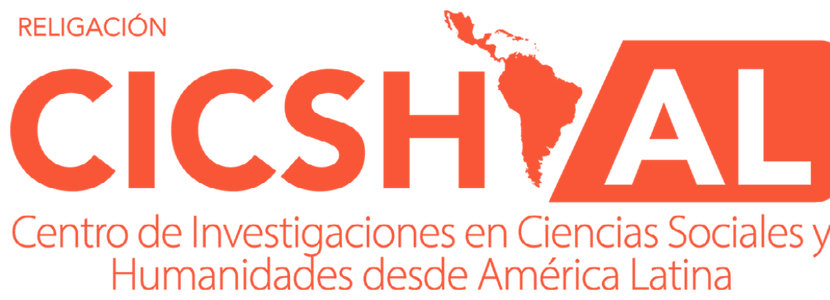Systemic methodology and virtual reality. Facing didactic obstacles in engineering education.
Keywords:
Systemic methodology; Didactic obstacles; Virtual reality; Electrical engineering.Synopsis
In this book, the Systemic Methodology for Facing Didactic Obstacles is described as a useful tool for confronting the main didactic obstacles that arise in the teaching and learning process of engineering students, using virtual reality technology. This methodology is the result of integrating key stages of two theories, one from the science of systems and the other from contextual sciences, which gave it an integral character in the design, development, and implementation of said methodology. Not only were students, teachers, and thematic contents considered, but also the environment in which they operate, allowing encouraging results to be obtained from its implementation as evidenced in the evaluation stage. This demonstrates the effectiveness of using virtual reality to confront didactic obstacles present in the teaching of electrical engineering, following a methodological sequence. Although electrical engineering students were considered as a case study in this book, the methodology can easily be applied to the teaching of any engineering, as these obstacles are commonly present in all of them.
Downloads
References
Ackoff, R. (1998). Planificación de la empresa del futuro. Editorial Limusa.
Ai-Lim, E., & Wai, K. (2008). A review of using virtual reality for learning. Transactions on edutainment. In A. El Rhabili (Ed.). Lecture Notes in Computer Science, (pp. 231-241) Springer-Verlag.
Almudí, M., Zuza, K., y Bonet, E. (2005). Explicando los fenómenos de inducción electromagnética: Relevancia de su enseñanza y dificultades de aprendizaje. [Congreso]. VII congreso Enseñanza de las ciencias, España.
Ariyakul, Y., Aizawa, T., & Nakamoto, T. (2013). Tiny Olfactory Display Based on SAW Streaming and Electroosmosis. IEEJ Transactions on Sensors and Micromachines, 133(6), 206-211.
Arrigo, G., y D’Amore, B. (2004). Otros hallazgos sobre los obstáculos epistemológicos y didácticos en el proceso de comprensión de algunos teoremas de George Cantor. Educación Matemática, 16(2), 5-20.
Autino, B. del C., Digión M.A., Llanos, L.M., Marcoleri, M.E., Montalvetti, P.G., y Soruco, O. S. (2011). Obstáculos didácticos, ontogenéticos y epistemológicos identificados desde la comunicación en el aula de Matemática. [Congreso]. Memorias del XIII CIAEM-IACME, Recife, Brasil, 2011.
Bachelard, G. (1972). La noción de obstáculo epistemológico. La formación del espíritu científico. Siglo Veintiuno Editores.
Bar-Cohen, Y. (2003). Haptic devices for virtual reality, telepresence, and human-assistive robotics. In Y. Bar-Cohen, C. Breazeal. (Eds.). Biologically Inspired Intelligent Robots. https://doi.org/10.1117/3.2068093.ch4
Bastién, G.M., Mora, C., y Sanchez-Guzman, D. (2010). Obstáculos en la resolución de problemas en estudiantes de bajo rendimiento. Latin-American Journal of Physics Education, 4(3)
Batanero, C., Godino, J. D., Green, D. R., Holmes, P., y Vallecillos, A. (1994). Errores y dificultades en la comprensión de los conceptos estadísticos elementales. International Journal of Mathematics Education in Science and Technology, 25(4), 527- 547.
Bodner, G. M. & Guay, R.B. (1997). The Purdue Visualization of Rotations Test. The Chemical Educator, 2(4), 138-154.
Bosch, H., Di Blasi, M. A., Pelem, M. E., Bergero, M. S., Carvajal, L. & Geromini, N. S., (2011). Nuevo paradigma pedagógico para enseñanza de ciencias y matemática. Avances en Ciencias e Ingeniería, 2(3), 131-140.
Brousseau. G. (1989). Les obstacles épistémologiques et la didactique des mathématiques. In N. Bed-Narz, C. Garnier. Construction des savoirs Obstacles et Conflits, (pp. 41-63). CIRADE Les éditions Agence d’Arc inc.
Brown, S. (2008). Exploring epistemological obstacles to the development of mathematics induction. [Congress] 11th Conference for Research in Undergraduate Mathematics Education. San Diego, CA.
Burdea, C. (1993). Virtual reality systems and applications. Electro’93 Intemational Conference. Edison
Cabre, R. (2012). Diseños cuasi experimentales y longitudinales. Universidad de Barcelona.
Camarena Gallardo, P. (2013). A treinta años de la teoría educativa “Matemática en el Contexto de las Ciencias. Innovación educativa, 13(62), 17-44
Camarena, P. (1984). El currículo de las matemáticas en ingeniería, Memorias de las Mesas Redondas sobre Definición de Líneas de Investigación en el IPN, México,
Camarena, P (2000). Etapas de la matemática en el contexto de la ingeniería, reporte del proyecto de investigación, México. ESIME-IPN.
Camarena, P. (2006). Un enfoque de las ciencias en contexto desde la didáctica. Innovación Educativa, 6(31), 21-31.
Camarena, P. (2008). Teoría de la matemática en el contexto de las ciencias. [Congreso]. Actas del III Coloquio Internacional sobre Enseñanza de las Matemáticas, Conferencia Magistral, Perú.
Camarena, P. (2009). La Matemática en el Contexto de las Ciencias. Innovación Educativa, 9(46), 15-25
Camarena, P., Navarro, R., & Navarro, Y. (2012). Experiencias institucionales exitosas en educación a distancia. Apertura, 4(2).
Camarena, P. (2014). Un Modelo para el diseño de material computacional interactivo. IE Comunicaciones: Revista Iberoamericana de Informática Educativa, 19, 1.
Cano, J., Gómez, J., & Cely, I. (2009). La enseñanza del concepto de corriente eléctrica desde un enfoque histórico-epistemológico. [Tesis de licenciatura, Universidad de Antioquia]. https://hdl.handle.net/10495/450
Carvalho, G. S., Silva, R., y Clément, P. (2007). Historical analysis of Portuguese primary school textbooks (1920–2005) on the topic of digestion. International Journal of Science Education, 29(2), 173-193.
Chamorro, M. (1995) Los procesos de aprendizaje en matemáticas y sus consecuencias metodológicas en Primaria. Uno: Revista de Didáctica de las Matemáticas, 2(4)
Chen, D. & Stroup, W. (1993). General system theory: Toward a conceptual framework for science and technology education for all. Journal of Science Education and Technology, 2(3), 447-459
Chen, L., Hong, Q., Wang, B., Wu, Q. (2014). Design and Implementation of the Virtual Experiment System. In Li, S., Jin, Q., Jiang, X., Park, J. (eds) Frontier and Future Development of Information Technology in Medicine and Education. Lecture Notes in Electrical Engineering, vol 269. Springer. https://doi.org/10.1007/978-94-007-7618-0_431
Clark, T. E. (1997). El destino invisible de la educación. Editorial Pax
D’Amore, B. & Fandiño M.I. (2002). Un acercamiento analítico al “triángulo de la didáctica”. Educación Matemática, 14(1), 48-61.
De Souza, S. (2009). Un análisis de los errores de los estudiantes en clases virtuales de geometría descriptiva bajo las teorías del desarrollo del pensamiento geométrico y del concepto figural. Revista Iberoamericana de Educación, 51(1).
Dufaux, F., Pesquet-Popescu, B., & Cagnazzo, M. (2013). Emerging technologies for 3D video: creation, coding, transmission and rendering. John Wiley & Sons.
ESIMEZ-IPN (s.f.). Carreras https://www.esimez.ipn.mx/oferta-educativa/carreras.html
Fällman, D., Backman, A. & Holmlund, K. (1999). VR in Education: An Introduction to Multisensory Constructivist Learning Environments. Universitets pedagogisk konferens, Umeå Universitet.
Felder, R., Woods, D. R., Stice, J. E. & Rugarcia, A. (2000). The future of engineering education, II. Teaching methods that work. Chem. Engr. Education, 34(1), 26–39.
Fleming, N.D. & Mills, C. (1992). Helping Students Understand How They Learn. The Teaching Professor, 7(4).
Flood, R. L., Jackson, M. C., & Schecter, D. (1992). Total Systems Intervention: a research program. Systems Practice, 5(1), 79-83.
Flores, J. A., Camarena, P., y Avalos, E. (2014). Oportunidades de integración de la realidad virtual al proceso de enseñanza de los estudiantes de ingeniería eléctrica: un análisis desde el enfoque de sistemas. Revista Internacional de Aprendizaje en Ciencia, Matemáticas y Tecnología, 1(2).
Fowler, R. H., Carrillo, M. D., Huerta, R. A., & Fowler, W. A. (2012). Designing a low-cost immersive environment system twenty years after the first CAVE. In Proc. International Conference on Computer Graphics and Virtual Reality, WORLDCOMP.
Gigch, J. P. V. (1987). Teoría general de sistemas. Editorial Trillas.
Guerra, M. M. (2010). La geometría y su didáctica. Revista Innovación y experiencias Educativas, (31),
Hwang, A. D., & Peli, E. (2014). Instability of the perceived world while watching 3D stereoscopic imagery: A likely source of motion sickness symptoms. I-Perception, 5(6), 515–535. http://doi.org/10.1068/i0647
Kalorama Healthcare reports. (2011) Virtual Reality (VR) in Healthcare in the US. Ed. 2. Kalorama
Lee, E. A.-L., Wong, K. W. & Fung, C. C., (2009). Learning Effectiveness in a Desktop Virtual Reality-Based Learning Environment, In Kong, S.C., et al. (Eds.). Proceedings of the 17th International Conference on Computers in Education. Asia-Pacific Society for Computers in Education.
Leite, W. L., Svinicki, M., & Shi, Y. (2010). Attempted validation of the scores of the VARK: Learning Styles Inventory with multitrait–multimethod confirmatory factor analysis models. Educational and Psychological Measurement, 70, 323-339.
Leng, J. (2001). Scientific examples of Virtual Reality and visualization applications. UKHEC
Maynard, N., Kingdon, J., Ingram, G., Tadé, M., Shallcross, D. C., Dalvean, J. & Kavanagh, J. (2012). Bringing Industry into the Classroom: Virtual Learning Environments for a New Generation. [Congress]. Proceedings of the 8th International CDIO Conference, Queensland University of Technology, Brisbane, July 1–4, 2012
Meyer, R., Debiaggi, M., y Giménez, N. (2008). La inferencia estadística como metodología. análisis de contenido de ideas fundamentales (IEF). Ciencias Económicas, 2(9), 29-46.
Molineux, J. & Haslett, T. (2005). The use of Total Systems Intervention in an action research project: Results and implications arising from practice. [Congress]. 11th Annual ANZYS Conference/Managing the Complex V: “Systems Thinking and Complexity Science: Insights for Action”, New Zealand, 5–7.
Ocampo, F., Guzmán, A., Camarena, P., y de Luna, R. (2014). Identificación de estilos de aprendizaje en estudiantes de ingeniería. Revista Mexicana de Investigación Educativa, 19(61), 401-429.
Olazábal, A.M., y Camarena, P. (2003). Categorías en la traducción del lenguaje natural al lenguaje algebraico de la matemática en contexto. Memorias del Congreso Nacional de Profesores de Matemáticas, México.
Palarea M., y Socas, M. (1994). Algunos obstáculos cognitivos en el aprendizaje del lenguaje algebraico. Suma: Revista sobre Enseñanza y Aprendizaje de las Matemáticas, 16, 91-98
Rugarcia, A., Felder, R., Woods, D. R., & Stice, J. E. (2000). The Future of Engineering Education, A vision for a new century. Chem. Engr. Education, 34(1), 16–25.
Salavastru, D. (2014). Obstacles and errors in the appropriation of the psychological language. Argumentum. Journal the Seminar of Discursive Logic, Argumentation Theory y Rhetoric, 21(1).
Sampaio, A. Z. (2012). Virtual Reality Technology Applied in Teaching and Research in Civil Engineering. Education Journal of Information Technology and Application in Education, 1(4).
Sánchez-Lara, B. (2015). Enfoque de Sistemas [notas del curso]. Programa de Posgrado en Ingeniería, UNAM Departamento de Ingeniería de Sistemas
Seijo, B., M., Iglesias, N., Hernández, M., & Hidalgo, C. R. (2010). Métodos y formas de organización del proceso de enseñanza- aprendizaje. Sus potencialidades educativas. Rev Hum Med, 10(2).
Serradó, A., Cardeñoso, J. M., y Azcárate, P. (2005). Los obstáculos en el aprendizaje del conocimiento probabilístico: su incidencia desde los libros de texto. Statistics Education Research Journal, 4(2), 59-81.
Serway, R. A. (1997). Física, II. McGraw Hill
Soares, P. V., de Almeida Milito, G., Pereira, F. A., Reis, B. R., Soares, C. J., de Sousa Menezes, M., & de Freitas Santos-Filho, P. C. (2013). Rapid prototyping and 3D-virtual models for operative dentistry education in Brazil. Journal of dental education, 77(3), 358-363.
Stoner, J., R. Freeman, E. y Gilbert, D. (1996). Administración. Pearson Educación.
Sulbaran, T. & Baker, N.C., (2000). Enhancing engineering education through distributed virtual reality. [Congress]. Frontiers in Education Conference Proceedings, pp. S1D/13-S1D/18, 30th Annual Frontiers in Education–Vol 2.
Talaba, D., & Amditis, A. (2008). Tools and Methods Based on Virtual Reality. Product Engineering. Springer.
Thorndike, L.R., & Hagen, E. (1973). Tests y técnica de medición en psicología y educación. Editorial Trillas
Vesely, F. J. (2005). Explaining Gibbsean phase space to second year students. European journal of physics, 26(2), 243.
Villamil, L. E. (2008). La noción de obstáculo epistemológico en Gastón Bachelard. Espéculo: Revista de Estudios Literarios, 38.
Von Bertalanffy, L. (1950). An Outline of General System Theory. The British Journal for the Philosophy of Science, 1(2), 134–165.
Warren, L. (2002). Total Systems Intervention. Systems Science and Cybernetics – Vol. II Encyclopedia of Life Support Systems (EOLSS). Plenum Press







